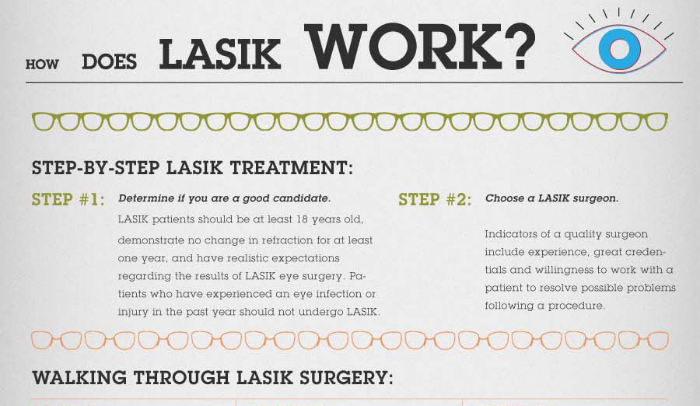Uncertain Regarding SMILE Surgical Procedure? Discover Crucial Aspects And Understandings That Will Certainly Assist You In Making An Educated Choice Concerning Your Vision's Future

Author-McDowell Mooney
If you're pondering SMILE eye surgery, ponder this: are you prepared to embrace possible aesthetic flexibility, or does the idea of any type of risks make you wait? Your decision will depend upon a cautious balance of considering the advantages against the uncertainties. It's vital to dig much deeper into the nuances of SMILE surgical treatment to make an informed selection that straightens with your aesthetic goals.
Comprehending SMILE Eye Surgical Treatment
When taking into consideration SMILE Eye Surgery, it is necessary to recognize the treatment and its benefits. SMILE, which stands for Little Incision Lenticule Removal, is a minimally invasive laser eye surgery that fixes typical vision troubles like myopia (nearsightedness).
Throughout the procedure, your eye doctor will use a femtosecond laser to produce a small cut in your cornea. With this laceration, a little disc of cells called a lenticule is eliminated, reshaping the cornea and correcting your vision.
One of the essential advantages of SMILE Eye Surgery is its quick healing time. Numerous clients experience enhanced vision within a day or two after the procedure, with minimal pain.
Furthermore, SMILE is understood for its high success rate in offering lasting vision improvement. Unlike LASIK, SMILE does not require the production of a flap in the cornea, minimizing the risk of issues and enabling a much more secure corneal framework post-surgery.
Comprehending the treatment and its advantages is important when taking into consideration SMILE Eye Surgery for vision improvement.
Advantages and disadvantages of SMILE
Thinking About SMILE Eye Surgical treatment for vision improvement comes with different benefits and prospective drawbacks.
Among the main pros of SMILE is its minimally intrusive nature, as it involves a little incision and normally leads to fast healing times. The treatment is also known for causing marginal discomfort and dry eye signs post-surgery compared to various other vision improvement methods. Furthermore, SMILE has actually been revealed to supply exceptional aesthetic results, with many patients accomplishing 20/20 vision or far better.
On the other hand, a possible con of SMILE is that it might not be suitable for people with severe refractive mistakes, as the treatment range is rather restricted compared to LASIK. Another factor to consider is that the discovering contour for specialists executing SMILE can impact the availability of knowledgeable carriers in particular areas.
It is very important to weigh these advantages and disadvantages carefully when deciding if SMILE is the ideal option for your vision adjustment requirements.
Establishing Qualification for SMILE
To establish if you're eligible for SMILE eye surgical treatment, your eye doctor will perform a thorough evaluation of your eye health and vision requirements. Throughout this evaluation, factors such as the stability of your vision prescription, the thickness of your cornea, and the general health and wellness of your eyes will certainly be evaluated.
Generally, prospects for SMILE more than 22 years of ages, have a secure vision prescription for a minimum of a year, and have healthy corneas without conditions like keratoconus.
Your eye doctor will likewise consider your general eye health, any type of existing eye conditions, and your lifestyle needs to establish if SMILE is the best option for you. It's necessary to communicate any certain aesthetic requirements or concerns you may have throughout this evaluation to make sure that the treatment straightens with your expectations.
If you aren't eligible for SMILE, your eye doctor might recommend alternative vision modification options that much better suit your specific demands and eye health and wellness status.
Conclusion
Ultimately, making a decision whether SMILE eye surgical treatment is right for you calls for careful consideration of your specific eye health and wellness and visual needs. Talk to your ophthalmologist to identify your eligibility for the procedure and evaluate the potential advantages and drawbacks. try this out in mind to connect any kind of concerns or questions you might have throughout the evaluation procedure to make an informed choice regarding your vision adjustment alternatives.

